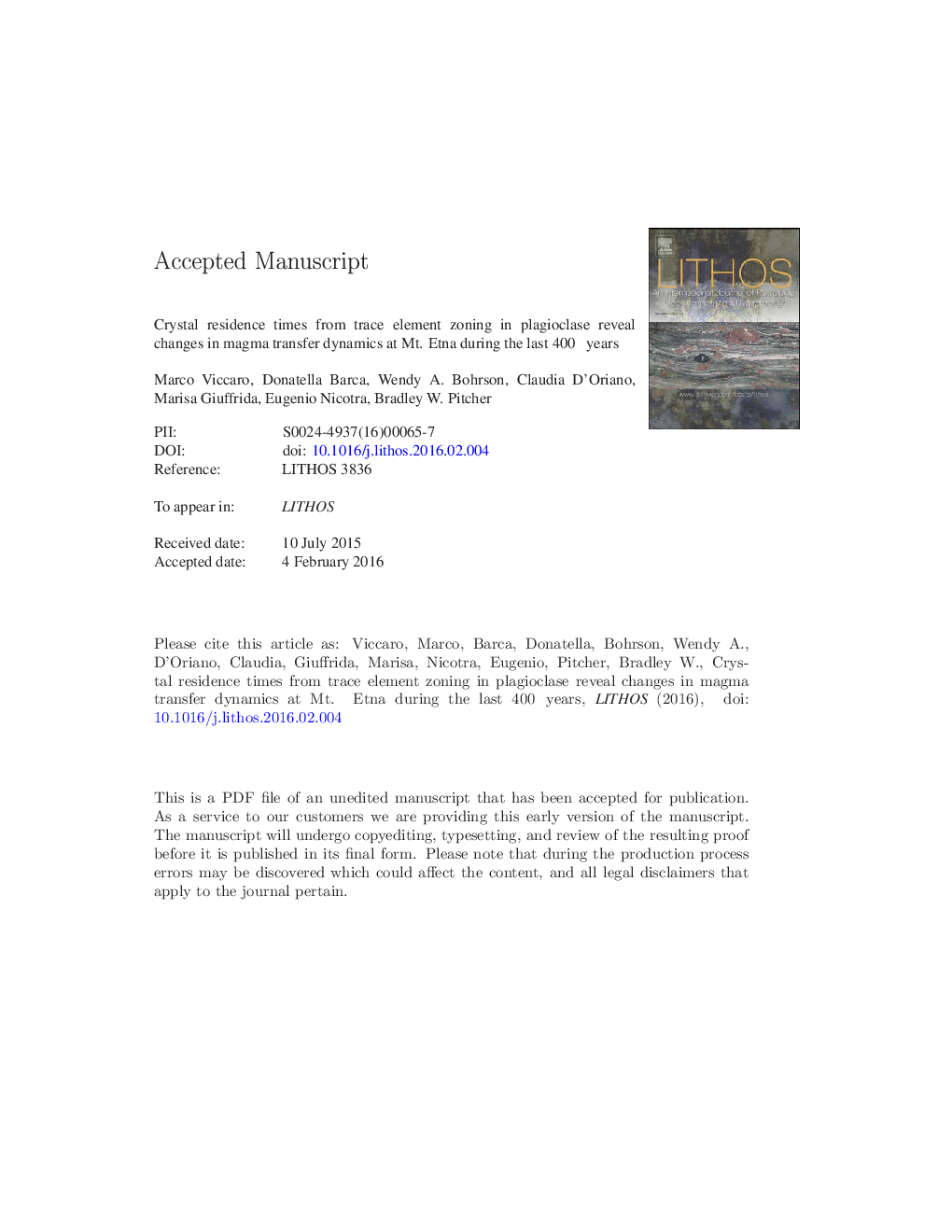| Article ID | Journal | Published Year | Pages | File Type |
|---|---|---|---|---|
| 6440400 | Lithos | 2016 | 55 Pages |
Abstract
Trace element zoning in plagioclase of selected alkaline lavas from the historic (1607-1892Â AD) and recent (1983-2013Â AD) activity of Mt. Etna volcano has been used to explore the possible role that volcano-tectonics exert on magma transfer dynamics. The observed textural characteristics of crystals include near-equilibrium textures (i.e., oscillatory zoning) and textures with variable extent of disequilibrium (patchy zoning, coarse sieve textures and dissolved cores). Historic crystals exhibit lower K concentrations at lower anorthite contents, a feature in agreement with the general more potassic character of the recent lavas if compared to the historic products. Historic plagioclases have statistically higher Ba and lower Sr concentrations than the recent crystals, which result in different Sr/Ba ratios for the two suites of plagioclase. Variations in the anorthite content along core-to-rim profiles obtained on crystals with different types of textures for both the historic and recent eruptive periods were evaluated particularly versus Sr/Ba. At comparable average An contents, crystals characterized by oscillatory zoning, which are representative of near-equilibrium crystallization from the magma, display distinct Sr/Ba ratios. We suggest that these features are primarily related to recharge of a new, geochemically-distinct magma into the storage and transport system of the volcano. In addition to distinct trace element and textural characteristics of plagioclase, Sr diffusion modeling for plagioclase suggests that residence times are generally shorter for crystals found in recently erupted lavas (25-77 years, average 43Â years) compared to those of the historic products (43-163 years, average 99Â years). Shorter residences times correlate with gradual increases in eruption volume and eruption frequency rates through time. We attribute these features to an increasing influence, since the 17th century, of extensional tectonic structures within the upper 10Â km of the Etnean crust, which have promoted shorter residence times and higher eruption frequency.
Related Topics
Physical Sciences and Engineering
Earth and Planetary Sciences
Geochemistry and Petrology
Authors
Marco Viccaro, Donatella Barca, Wendy A. Bohrson, Claudia D'Oriano, Marisa Giuffrida, Eugenio Nicotra, Bradley W. Pitcher,
